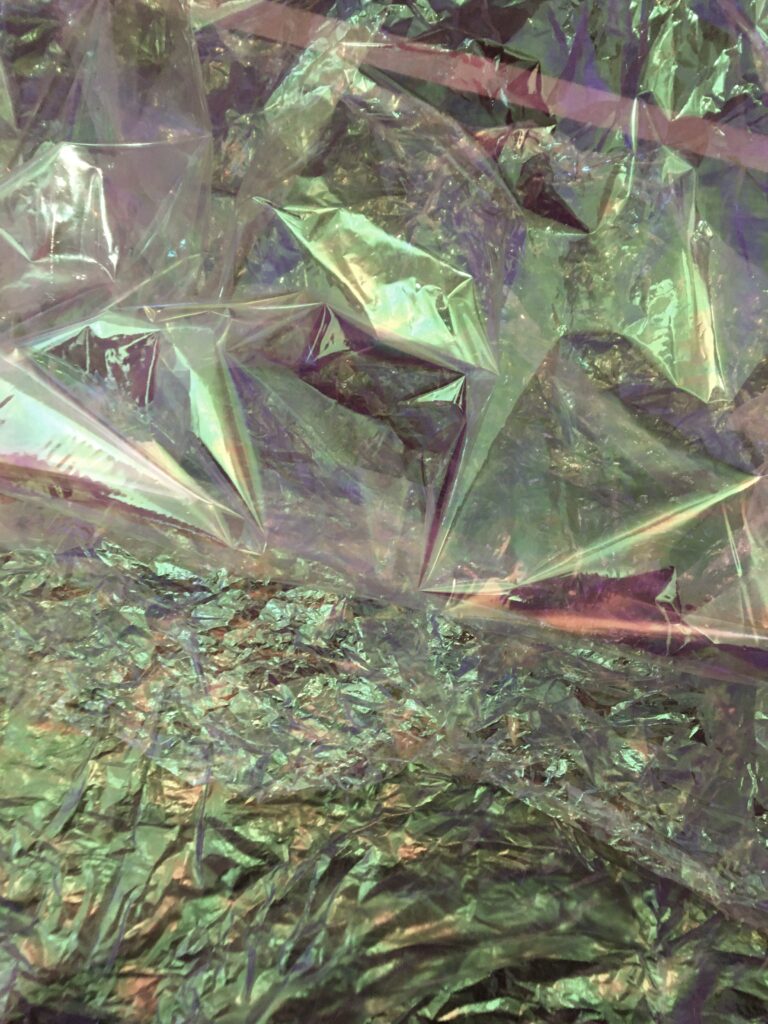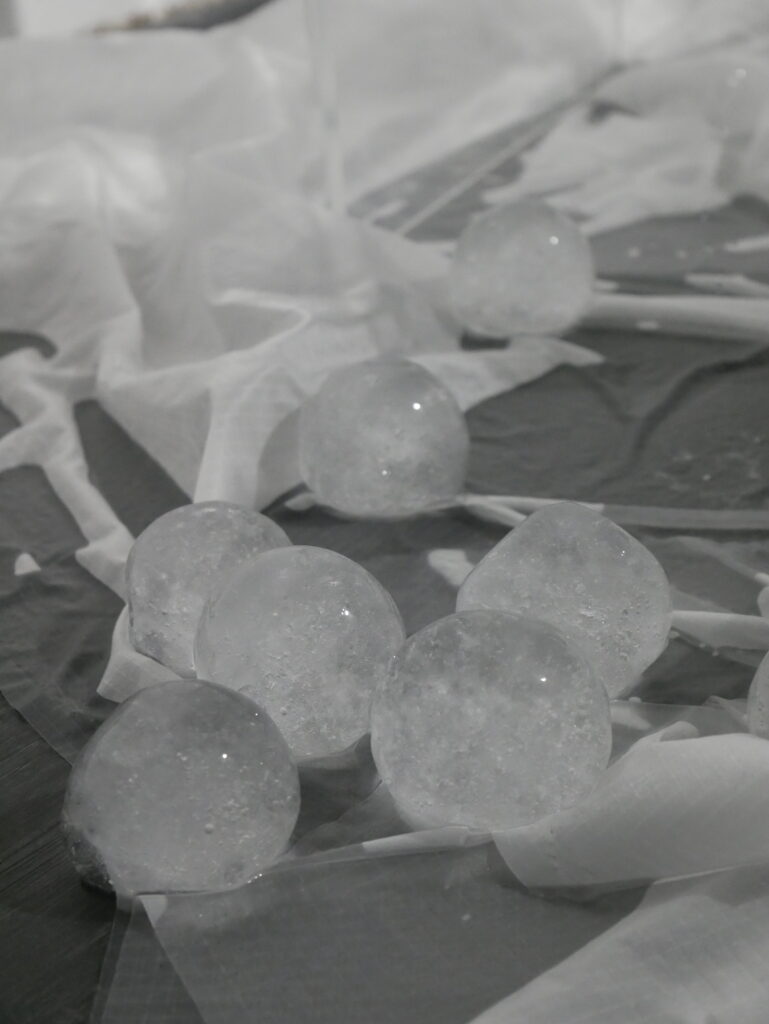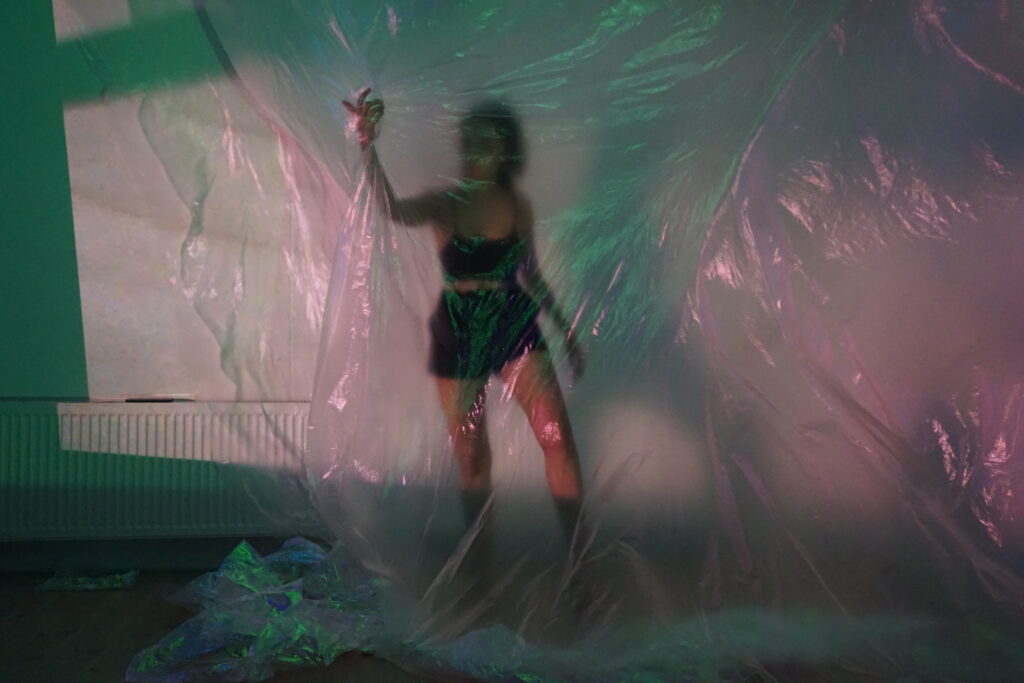The Feeling is Mutual is a seamlessly hybrid installation that combines a physical and a digital layer, connecting online and onsite audience through sensors. Their emotions shape the space, where they are free to explore a narrative through different perspectives, depending on the path they choose to take.
HARDWARES & SOFTWARES
Unity, Arduino, TouchDesigner.
FUNDING
Both the digital and physical spheres were developed having HAU Hebbel am Ufer and LAKE Studios as venues, from 2020 to 2023. Funded by Funded by the promotion of Digital Development in the Cultural Sector (2020) and Fonds Darstellende Künste with funds from the Federal Government Commissioner for Culture and the Media, through TakeCare and TakeHeart Residenzförderung (2021 – 2023). The official premiere will be at Schaubude Berlin in May 2024.

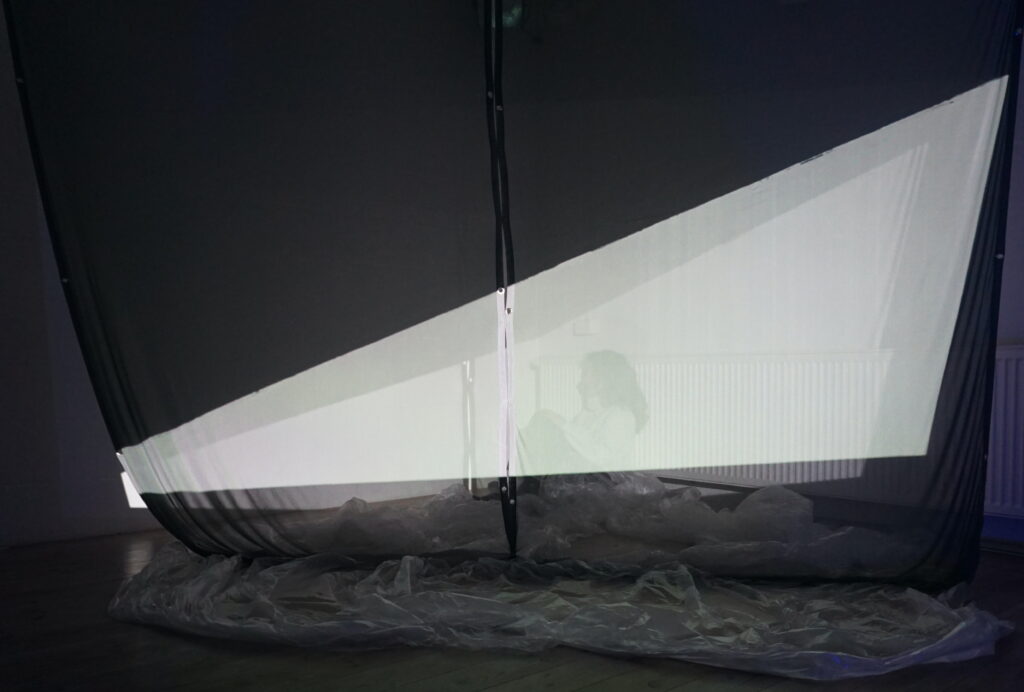
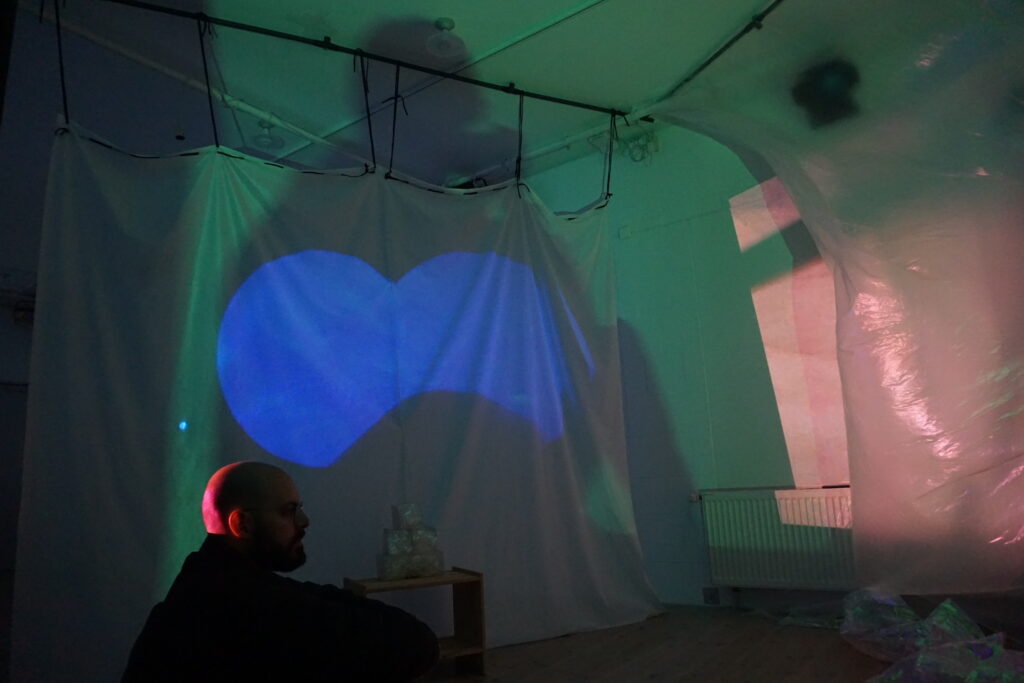
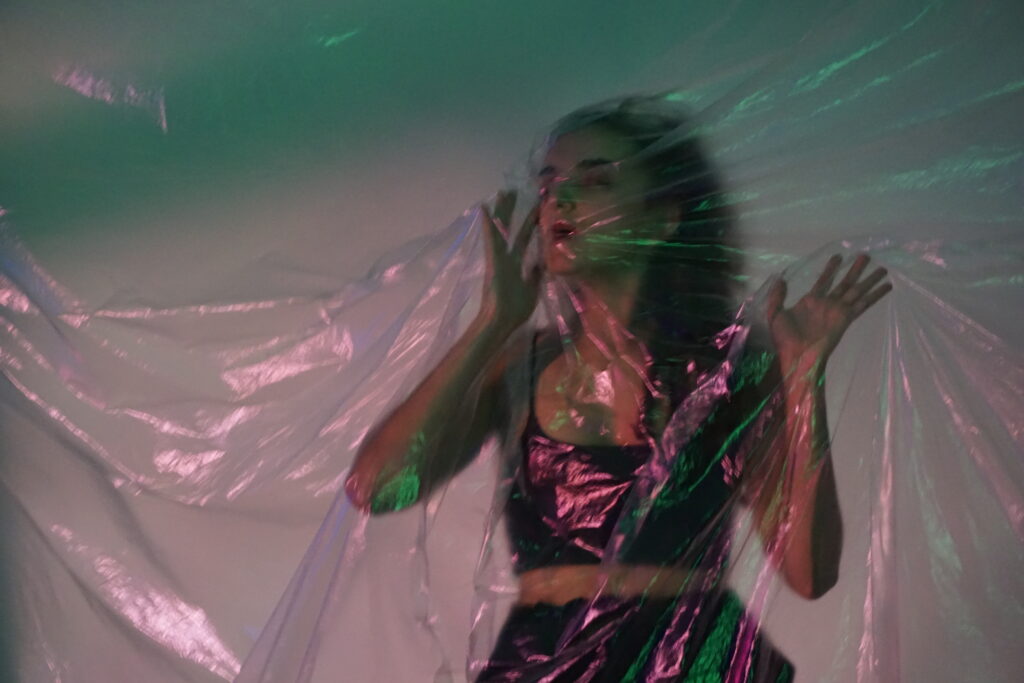




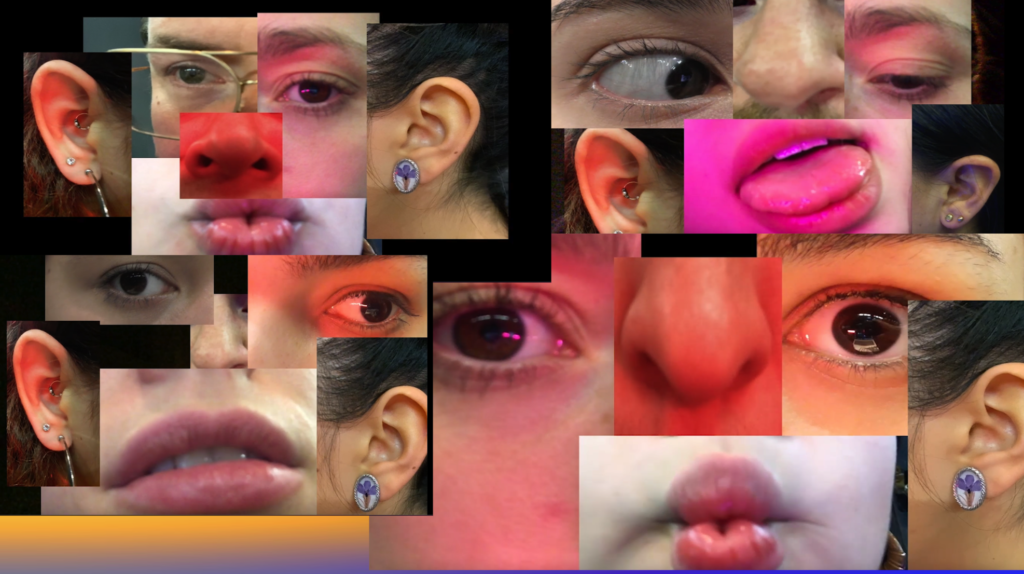



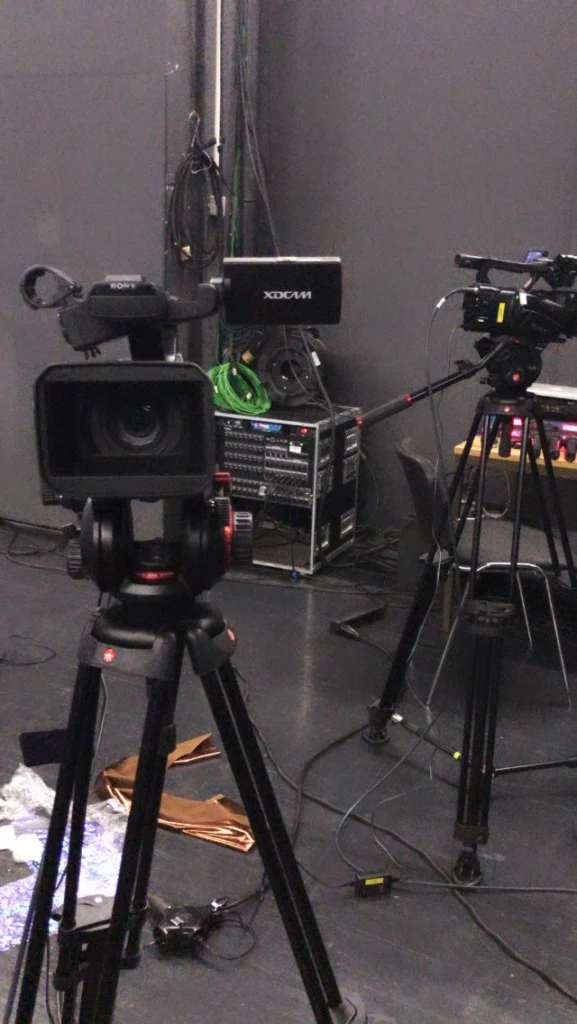

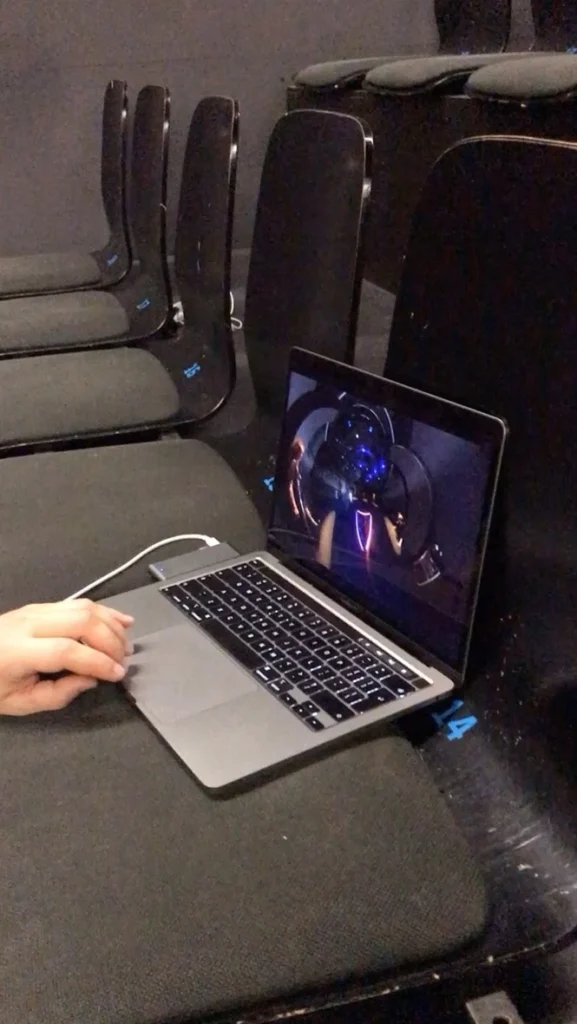
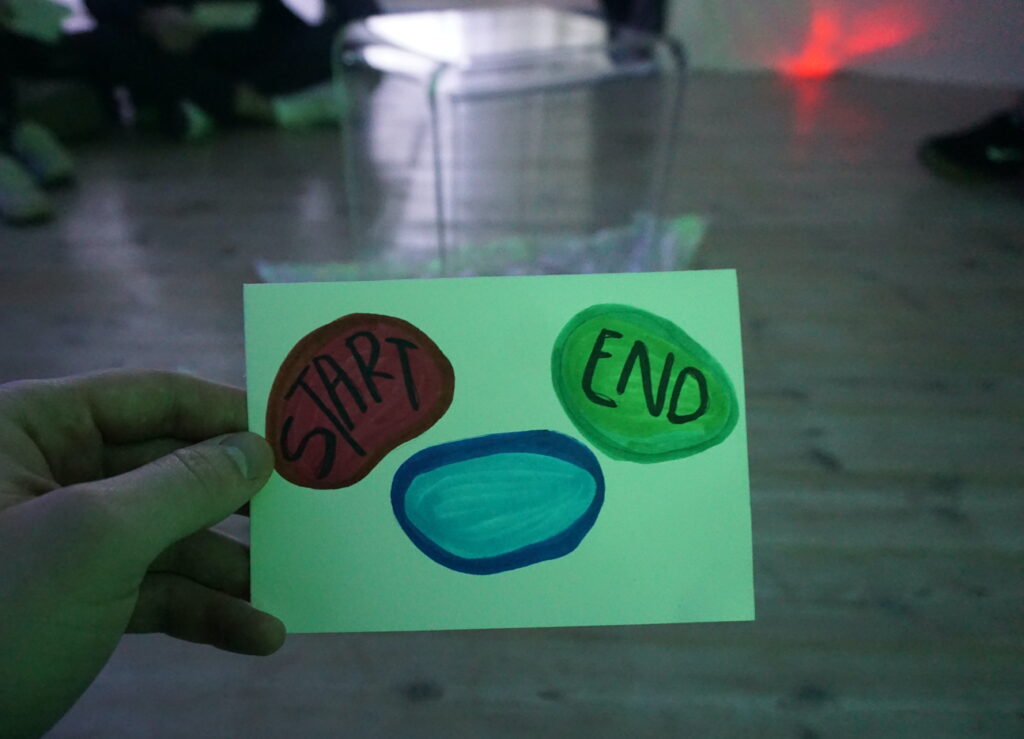

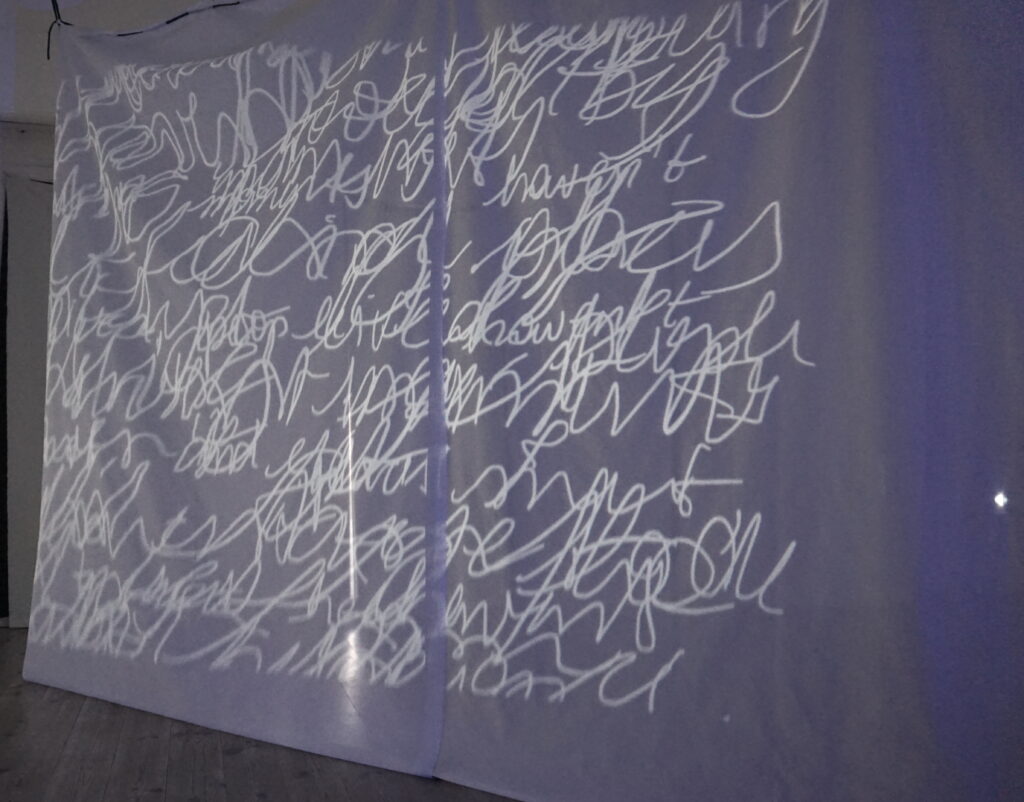
ABOUT
The Feeling is Mutual is a digital installation using performance, media, text and audio that welcomes the audience to experience a narrative through different perspectives, depending on the path they follow on the space. The work is a research on hybrid experiences in playing with the space between physical and digital, and possible pieces that live in this void, aiming to generate moments of connection between audiences online and on site, and the performers as a balanced trifecta. The project reflects on the fluidity of human feelings by looking for new ways to empathize; a reminder that you’re not the only one.
For three days in September 2020, the first Online Hackaton took place at HAU Hebbel am Ufer, where utopias for the theater of the future and HAU4 were developed. A jury (consisting of dgtl fmnsm, explain, Nathan Fain, Katja Grawinkel-Claassen, Romily Alice Walden and HAU) selected three projects to receive a paid research residency at HAU, made possible with the funding programme for digital development in the cultural sector of Berliner Senatsverwaltung für Kultur und Europa. Over a three-week period during, each selected team continued their projects. The collective dgtl fmnsm accompanied the residencies as mentors. At the moment, the project is being further developed with the support by Fonds Darstellende Künste with funds from the Federal Government Commissioner for Culture and the Media, as part of NEUSTART KULTUR
The Feeling is Mutual is the digital sphere of our project, developed at HAU Hebbel am Ufer with the support of DGTL FMNSM. The project was supported by the Funding programme for digital development in the cultural sector.
The work is a hybrid experience that explores core emotions by playing with digital elements, the senses and the imagination of the audience. Through the lens of a 360 camera, the online audience interacts with elements to design their own viewing experience in the space. They choose where to watch and move, generating moments of connection between audiences online and on site, and the performers as a balanced trifecta. The project reflects on the fluidity of human feelings by looking for new ways to empathize; a reminder that you’re not the only one.
The virtual layer is set inside a digital platform that combines multi-media content and planes while allowing the audience to make their own path through non-linear stories. Using four core human emotions as the foundation for the content and the architecture of the piece, the audience can move and interact with this world by clicking on 3D objects floating around a previously recorded performance. Each object leads them into another space with a more detailed part of the overall act, which creates a patchwork-like aesthetic with multiple enhanced points of view.
The digital space is constantly online, accessible with draft content when not during performances. You can access it via the link below.
See the prototype of the digital space: http://www.digitalfeminism.net/2020x/artworks/mutualfeeling/
Conception and creation: Ana Sofia Calixto, Anja Böthe, Areli Moran Mayoral, Elisabeth Ligonnet, Fabian Raith, Sofia Insua
Production: Anna Krauß, Sarah Reimann and HAU Hebbel am Ufer
Mentoring: DGTL FMNSM
Special thanks to Alla Popp, Anna Krauß, Konstanze Schütze, Sarah Reimann and the technical team of HAU. This project wouldn’t be possible without you.
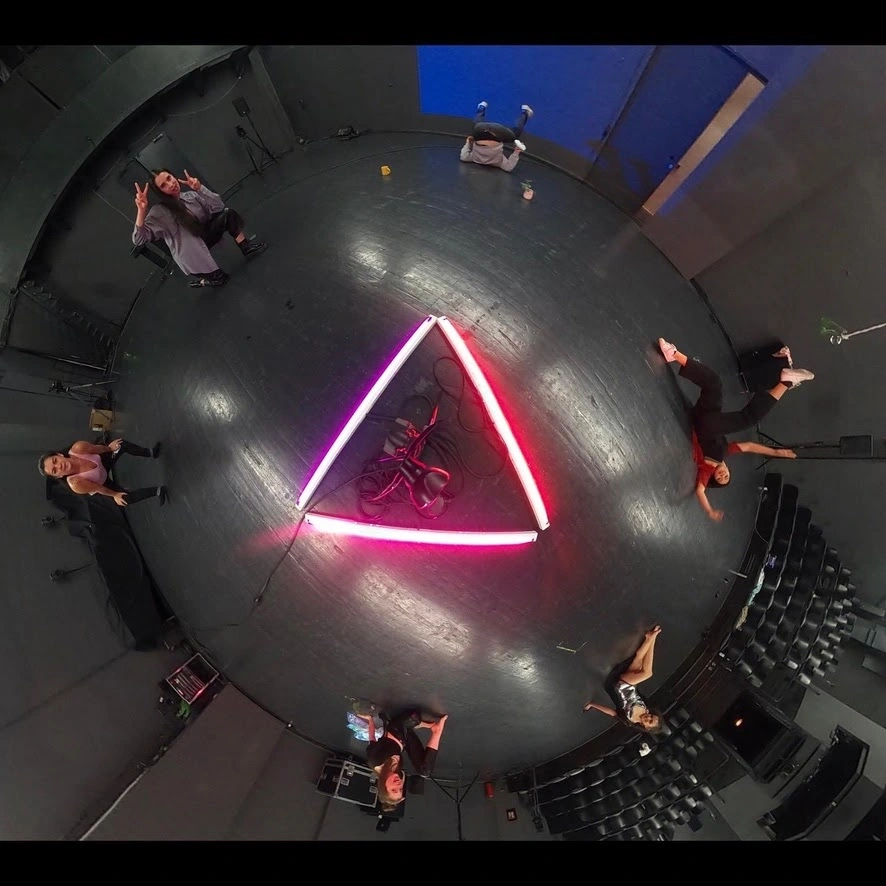
THE FUTURE OF THE FEELING IS MUTUAL
I FEEL U
I FEEL U is a hybrid experience that explores core emotions by playing with projections, the senses and the imagination of the audience. The piece now lives in both a physical and digital space mixing a 360° video format, 3D objects, audio and live performance – aiming to generate moments of connection between the two types of audiences (online and on site) and the performers as a balanced trifecta. The project reflects on the fluidity of human feelings by looking for new ways to empathize; a reminder that you’re not the only one.
The first prototype of I FEEL U, developed with the support of HAU Hebbel am Ufer and DGTL FMNSM under the name The Feeling is Mutual, was born out of a pause – of life as we know it. As we found ourselves lacking social interaction, we craved for artistic alternatives to come in touch with one another. It is set inside a filmed performance shot with a 360 degree camera. This digital platform combines multi-media content and planes while allowing the audience to make their own path through non-linear stories. Using four core human emotions as the foundation for the content and the architecture of the piece, the audience can move and interact with this world by clicking on 3D objects floating around a previously recorded performance. Each object leads them into another space with a more detailed part of the overall act, which creates a patchwork-like aesthetic with multiple enhanced points of view.
PHYSICAL DIMENSION. This in-person space is an interdisciplinary setting that seamlessly combines media, materiality and plastic arts in order to host a narrative; utilising projections, lights, video and sound as well as the physical body. In order to transfer the digital experiences presented in the previous prototypes to a physical space, different kinds of materials, such as holographic screens, meshes, tulle, translucent fabrics and metal or wood will be used. The aim is to create a space that is as fluid as the concept. For this, we’ll use the flexibility and malleability of the scenography to recreate shapes the opposite of rigid. At the same time, the space is contained within a structured architectural blueprint and intentional placement of stations.
THEME / CONTENT. The discoveries made while researching excitement, contentment, distress, and depression – led to creating a performance based on them. The project’s dramaturgy will boil down to these concepts and human identity through them. Recollection of data and real time analytics of what people say they feel can come into play,, so that beholding a narrative becomes a sensorial experience of empathy. Multiple possibilities of connection – digitalization as a means of feeling human.
APPEALING TO THE SENSES. We’d look into the use of sensors or sensorial triggers through touch, sight and sound. For this last one, there was a helpful discovery made during the last research residency. It entails Wwise, an audio rendering software that works as an add on to Unity. It allows for more auditory sensitivity based on spatial awareness and positioning. Further research on materiality within virtual spaces is also a topic the project itself demands to delve into. In order to transmit sensations and feelings through digital platforms, it’s necessary to portray textures, movement and colours within virtual elements so that the audience can relate to them more strongly.
METHODS TO ENGAGE. In regards to acting and movement dramaturgy, the actions will be based on the use of kinesthetic empathy to bring the audience and performers together. This phenomenon refers to the spectator’s sense of participating in the observed movements and to feel the effect of reviving memories of previous experiences with the same muscular paths. We believe that this entanglement of research languages can exponentially increase the potential of the work.
ABOUT US. The five women involved are international multidisciplinary artists from different countries, upbringings and cultural backgrounds – Guatemala, Brasil, Mexico, Germany and Spain. Specialized in movement, materiality, dramaturgy and sound design. Diversified experience and an interdiscipliary approach do enrich the project by making it globally relevant and transparent. The hope is that YOU and I can relate and find ways of meaning the phrase I FEEL U, via physical and digital encounters.
Conception and creation: Ana Sofia Calixto, Anja Böthe, Areli Moran Mayoral, Sofia Insua, Irene Giró
Production: HAU Hebbel am Ufer, LAKE Studios Berlin
PROCESS
WEEK 1
During the initial onboarding phase of this Residency, there was a retroactive assessment of previous prototypes and developments that led to the current state of the project.
Various sketches of the potential architecture of the installation were made in order to get a clearer picture of its blueprint. One neutral space in the form of an hexagon, and three rooms surrounding it (in total, four core rooms). It was a good opportunity to flesh out a vision board with punctual references, and a detailed list of what was needed to build such a structure was made.
WEEK 2
Once the bones that would host the content were defined, there was an in depth discussion about the material onto which projections would wash over. Mesh (and its various types) was the perfect candidate as the effect it has when outlining a space makes one feel like in another dimension, somewhere in one’s mind, memory or subconscious. And also in terms of creating an intimate space, it’s personal, vulnerable and transparent.
Then came the question of merging the digital with the physical. The placement of the projectors and the various devices needed to power the content were carefully considered. And layering would become vital in order to dress up the space.
WEEK 3
Questions about performers, audience members, trajectory, and experience were made and answered. How would the story be told (performers in person vs projected ones, videos, materials)?
How would performers come into play? What’s their role and responsibility to participants?
What’s the audience’s role (active vs passive). What would their trajectory be like (guided by narrative)? How does it start and what’s the ending point?
WEEK 4
A space for in person testing was found in Berlin, as well as a studio space for the Test Run to which a trial invite-only audience would be invited in order to provide feedback. There was a process of adapting the previously established layout with the actual space and measurements in mind.
After discussing the hierarchy of dimensions, aesthetics, potential costumes, and materiality for performers to play with in each room’s movement piece, a recurring theme emerged. Water and its cycles as an effective portrayal of the human experience. The discoveries made while researching the following four core emotions – excitement, contentment, distress, and depression – has led to creating a performance based on them. The project’s dramaturgy boils down to these concepts and human identity through them. Emphasising non linear storytelling, recollection of data and real time analytics of what people say they feel could come into play. The element that will tie all of this together is WATER in its different states – its conductivity, multiplicity and the inevitability of trajectory once it’s going, traversing and in some way migrating. A mutual story of belonging. We are water (partially), water travels, water transforms.
WEEK 5 and 6
Building the physical space and playing to find possibilities of movement. All of the previous theory established was tested with practical methods, until an internal test run took shape in order to take place at Lake Studios Berlin.
The centre of the configuration was tested as an arrival space “The Mutual Space”, where participants would be introduced to the soundscape that would wash over them throughout. And from the beginning there would be an interaction in which they would answer a question or follow a specific colour-coded path that was only theirs. The role of the audience member was then defined as active. The responsibility of the performers was of course a very important one to establish too. To be facilitators and to be a layer that would complete the images created together with the projections, light and content. A tool used for the embodied movement scores was the Laban Efforts.
The placement of the projectors, speakers, and of the devices that would trigger the sound and visuals was also looked into. Layering and the contrast between stillness and movement are important parts of this project. Materiality (both through digital and physical means) as a grounding element or bridge between subconscious and conscious, would present elements that require adaptation and a slight shift in movement quality.
There was also a gathering of visual references of textures and layout to help create the architecture and theme. The underlying sources of inspiration for the main topic – the spectrum of feelings – were the different states of water and its cycles. We are water, it travels, it transforms and it’s highly conducive. This led to the creation of three rooms – each depicting water in its liquid, solid, gaseous form, asking the question HOW ARE YOU FEELING TODAY and offering the following answers connected to the rooms LIKE A FLOWING RIVER, LIKE A CRACKING ICEBERG OR LIKE A LIGHT FOG. The projection surface for each was different depending on the feel and ambiance that it had to convey. For example, the liquid room had a grey holographic mesh with the tilting movement of a surface that suggested the ever present question of a glass being half full or half empty, while a performer embodied this sentiment behind it. It also had another projection of a choreographed handwritten text. In the ice room, there were two performers under sculpted see-through fabric and plastic playing with the sense of a glacier being shaken to its core. This while two ongoing projections showed a timelapse of melting ice cubes and machine typed text. And in the fog room, there was a thin flowy layer that separated and moved with the performer, as well as a station with narration. Sound design was unique for each space, but the soundscapes were designed to merge well together in case the rooms bled into each other. At the end there was an insightful feedback session.
